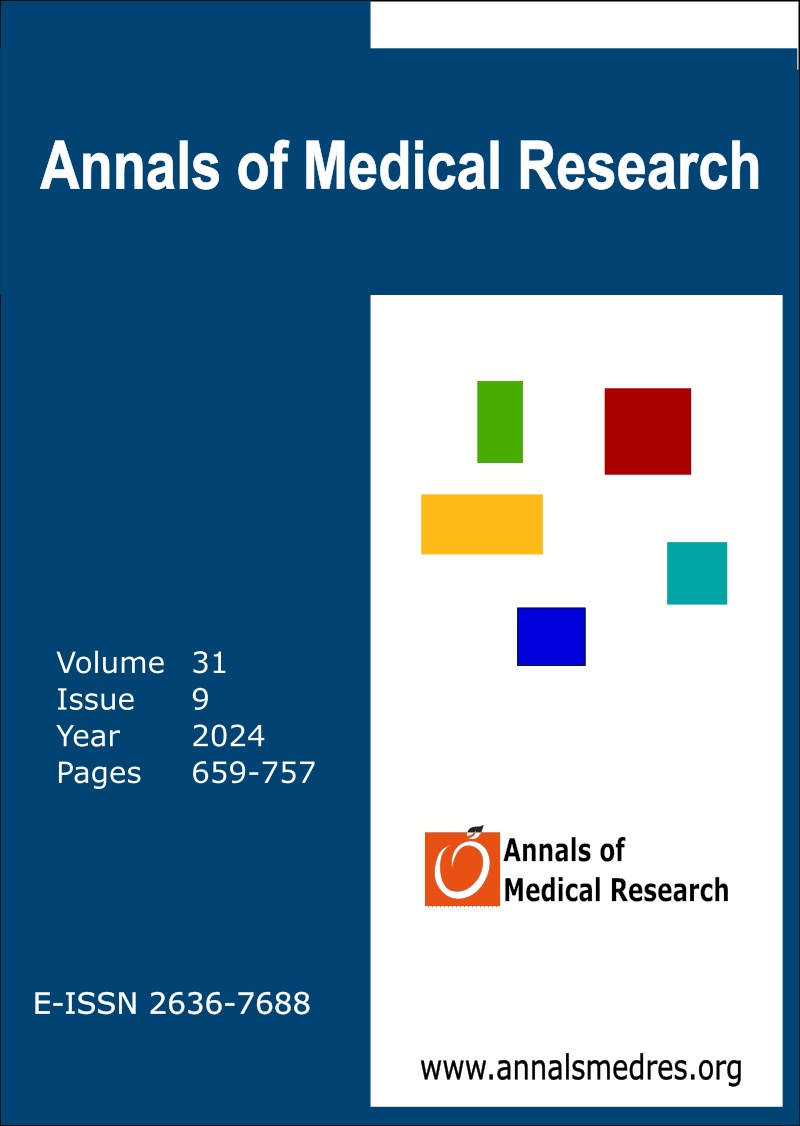Effectiveness of the modified Lafontaine criteria in predicting loss of reduction in distal radius fracture
Keywords:
Distal radius fractures, Effectiveness, Modified lafontaine criteria, Loss of reductionAbstract
Aim: This study aimed to retrospectively test the ability of the modified Lafontaine criteria to predict loss of reduction in distal radius fractures treated conservatively.
Materials and Methods: Between January 2019 and July 2021, a total of 171 patients aged 50-60 years diagnosed with distal radius fractures and treated with closed reduction and short arm casting were evaluated radiologically. Patients were categorized into two groups based on the modified Lafontaine criteria: Group 1 included patients meeting fewer than three criteria, while Group 2 included those meeting three or more criteria. Parameters such as age, gender, fracture side, fracture type (according to AO classification), follow-up period, radial length, and volar tilt degree after initial reduction were compared with their respective values at the last follow-up. Additionally, changes between values obtained at the last follow-up and those after initial reduction were analyzed.
Results: According to the modified Lafontaine criteria, 68 patients were classified into Group 1 and 103 patients into Group 2. Both groups exhibited similar distributions in terms of age, fracture side, and follow-up period (p>0.05). However, Group 2 showed a significantly higher proportion of females compared to Group 1 (p=0.004). Furthermore, Group 2 differed significantly from Group 1 in terms of fracture distribution (p=0.024). Radial lengths and volar tilt degrees after initial reduction showed no significant differences between the groups (p>0.05). At the last follow-up, it was observed that changes in radial length, volar tilt degree, and reduction loss were significantly greater in Group 2 (p<0.05). Analysis of differences between values at the last follow-up and after initial reduction indicated that radial length and volar tilt decreased or changed significantly more in Group 2 (p<0.05).
Conclusion: The modified Lafontaine criteria significantly predict higher reduction losses when three or more criteria are present. This study demonstrates that using three criteria as a cut-off can forecast average reduction loss. However, further research is necessary to delve into the individual effects of Lafontaine criteria, their combinations, and their clinical implications.
Downloads
Published
Issue
Section
License
Copyright (c) 2024 Annals of Medical Research

This work is licensed under a Creative Commons Attribution-NonCommercial-NoDerivatives 4.0 International License.
CC Attribution-NonCommercial-NoDerivatives 4.0






